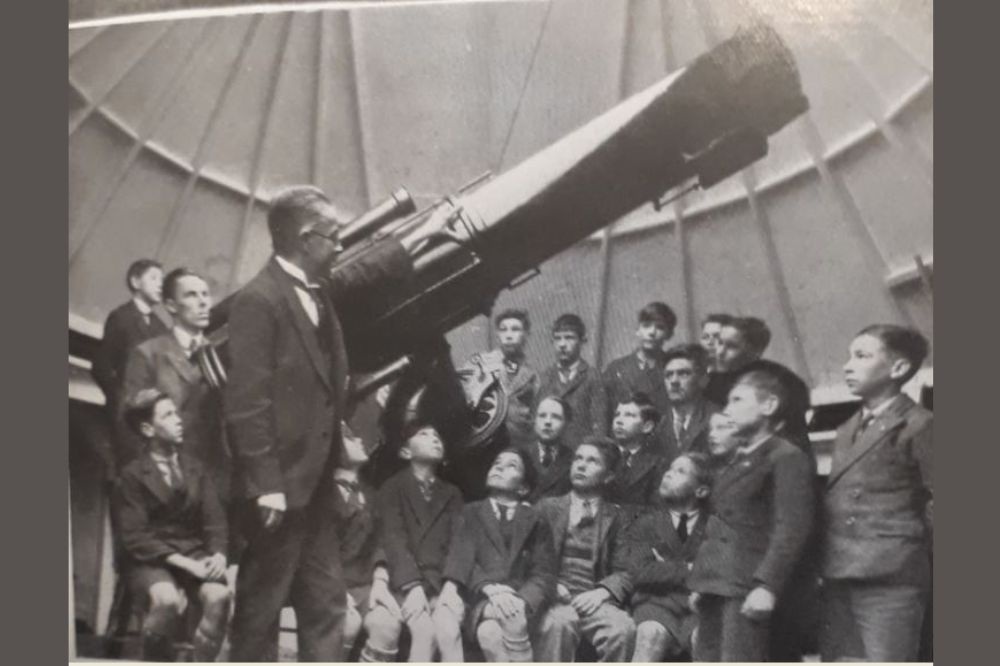Call to rebuild historic Cardiff observatory at St Fagans

Emily Price
A Senedd petition has been launched calling for an historic Edwardian-era astronomical observatory to be rebuilt at St Fagans National Museum of History.
Penylan Observatory in Cardiff served as a public observatory for decades, fostering community engagement and scientific interest.
The observatory’s telescope – considered one of the finest in its class – was originally built for a local rector in the 1870s by the famous maker, George Calver.
The Newtonian telescope itself was a 12 inch reflector with a magnification of about 500.
It was mounted on a specially designed platform to allow it to track on an equatorial axis.
Stargazing
In 1882, the instrument and the structure it was housed in, was passed on to eminent physician Franklen Evans.
Some years later, Mr Evans offered to present his large telescope, observatory and astronomical clock to the City of Cardiff.
The observatory was officially opened to the public to use free of charge in the summer of 1906 after being installed on Penylan Hill.
In 1909, the Cardiff Naturalists’ Society presented the observatory with a seismograph, adding another layer to its scientific contributions.
The observatory became a popular destination for school trips and public open days as well as hosting community events, such as stargazing nights and astronomy lectures.
It was replaced with a larger building in 1925 to accommodate growing public interest and in 1939, Dan Jones, an astronomer at the City Observatory, wrote a regular monthly column on the night sky for the Western Mail.

Sadly the observatory closed in 1979 after falling into neglect. The telescope was disposed of and its mounting melted down for scrap.
Its final custodian, Ron Lane, struggled to accept the tragic loss.
But whilst council workers dismantled the telescope, members of the Cardiff Astronomical Society were able to secretly safeguard the instrument’s optics by hiding them under their beds.
These optics remain the only original pieces of the observatory, presenting a unique challenge to rebuilding an entire structure from scratch.
Housing
The site where the Penylan Observatory once stood in Cardiff is now occupied by housing developments, with no visible remnants of the observatory itself.
With the belief that Penylan Observatory was gifted to the people of Cardiff, a Senedd petition spearheaded by Spencer Grennan FRSA, a member of the Cardiff Astronomical Society, is calling on the Welsh Government to rebuild the structure at open–air museum, St Fagans.
Over 50 historic buildings from all over Wales have been re-built at the museum’s 100 acre site including a Victorian school, a medieval church and a Workmen’s Institute.
More recently, landmark Cardiff pub, The Vulcan, was rebuilt and reopened there.
Roots
The petition has reached the first 250 signatures milestone meaning it will be discussed by the Senedd’s Petitions Committee.
At 10,000 signatures, it will be considered for a debate by politicians in the Senedd.
A spokesperson for the Society said: “We believe that there is a strong case for rebuilding Penylan Observatory.
“It would be a valuable educational resource for the people of Cardiff and would also be a major tourist attraction.”
The Royal Society of Arts, Dark Sky Wales, the Society for Popular Astronomy, the British Astronomical Association, and Roath Local History Society are among those backing the petition.
You can sign the ‘Rebuild Cardiff’s Lost Observatory at St Fagans Museum “Together we shape the story of Wales” here.
Support our Nation today
For the price of a cup of coffee a month you can help us create an independent, not-for-profit, national news service for the people of Wales, by the people of Wales.





This is a fantastic idea. I run a page on Facebook (https://www.facebook.com/PhysicsTeacherNetwork/) which features On This Day in Physics in Wales and this place has featured so many times. It’s been inspirational and is mentioned by people like Brian Josephson (https://www.nobelprize.org/prizes/physics/1973/josephson/facts/) and plenty more.